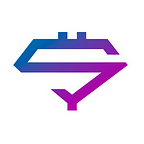Crypto Collectibles and Non-Fungible Tokens for Everyone
In the recent article dedicated to fan tokens, we briefly covered the concepts of fungible and non-fungible tokens also known as NFTs or collectibles. Today, we’re going to dive deeper to show you how NFTs work, what are their advantages and disadvantages, in which crypto/blockchain projects we use them, and more. Spoiler: these tokens add extra digital value and enable digitalization of… everything.
Grab some snacks and let’s start the next guide by Superorder!
The Essence of NFTs
Overall, before Bitcoin, it was possible to modify and replace digital entities almost without limits. The ideas of Bitcoin and blockchain allowed developers to program the so-called digital scarcity. Thanks to it, we can make real and digital worlds closer, by simulating the physical scarcity and irreplaceability.
Non-fungible tokens cultivate this approach. Hence, let’s answer three key questions related to these assets.
What Are They?
Historically, all currencies rely on fungible units that are fully equal. In other words, one 100-dollar banknote is the same as another 100-dollar banknote, as well as all other banknotes of this type. Similarly, one BTC is the same as another BTC even though these assets exist online. Fungibility is a crucial feature for any medium of exchange.
But NFTs don’t focus on payments. According to the name, each individual unit is unique. For instance, the Mona Lisa and Girl with a Pearl Earring are non-fungible paintings. Moreover, plane tickets are non-fungible, too. Despite they look similar, they have unique metadata: names, start/finish points, dates, etc.
Still, we love another comparison. Non-fungible tokens are just like baseball cards. That’s why we call them collectibles, too. The majority of NFTs feature another critical difference: they can’t be divided into smaller parts like fungible currencies. A dollar consists of pennies, BTC consists of SAT, a baseball card is impartible.
How Do They Work?
These tokens are units that contain a lot of core data and metadata. In the case of general digital assets, they have value for entertainment only. For digitized real-world things like paintings or sports cars, NFTs store info about these assets: artists, creation dates, trademarks, power, and many other points.
Generally, NFTs are based on two popular standards:
- ERC-721 — basic standard for development and trading of collectibles.
- ERC-1155 — combines fungibles and NFTs in a single contract.
Surely, both of these models rely on the Ethereum blockchain. Most often, developers create decentralized applications to issue and use tokens.
Similarly to traditional cryptocurrencies, non-fungible assets have addresses and can be stored in wallets such as Trust or MetaMask. Owners can buy, sell, and trade them on platforms like OpenSea and WAX. Continuing our art analogy, we can say that NFT values are defined by owners. Unlike cryptocurrency rates, these prices are shared beliefs as they have certain value because people agree to believe in these values.
Where We Can Use Them?
Collectibles are unique. This core feature enables a lot of opportunities for digital ecosystems. We can define three major ways to use NFTs:
- Digital identity. For this sphere, tokens may represent people. Each person potentially can digitize his/her identity, get a token, and use it for numerous verification/authorization requests regardless of the exact requirements.
- Gaming economies. This industry introduced the very first popular NFTs. In various games and decentralized projects, users can collect unique tokens to interact with them, exchange, or just look at and admire.
- Tokenization of real assets. Finally, non-fungible tokens are great tools for global digitization. They can act as digital copies of art objects, cars, buildings, land plots, and so on. This use case intersects with digital identities, evidently.
Prominent Projects with Collectibles
Coming closer to the conclusion, let’s take a quick look at the NFT-based projects. The majority of these examples fall into the gaming category. But there are also projects for art, real estate, and entertainment.
Here are a few of the most famous NFTs that existed earlier or exist now:
- Codex Protocol — a site that verifies the authenticity of assets, proves their provenance, and helps to maintain trustless digital identity.
- CryptoKitties — the first and the most famous gaming project with NFTs, allows collecting digital cats and selling them.
- Decentraland — a VR world based on blockchain that lets users buy and sell digital land, construct buildings, and explore their surroundings.
- Fantastec SWAP — a collectible platform for football fans that supports digital cards with famous players from Arsenal, Borussia Dortmund, and Real Madrid.
- Gods Unchained — a collectible card game in which players can exchange their assets, just like baseball cards or other real-world collectibles.
- SuperRare — a project for digital artists who can create artworks and sell them as NFTs with proven authenticity.
Boosting Digital Value
That’s not a secret that NFTs have both pros and cons. On the one hand, they represent an inevitable step on the road to full digitalization. If we’re going to build decentralized economies, we will need a method to bring real assets to our digital worlds. Non-fungible tokens are the best tools for this task. They ensure digital identity, prove the ownership and provenance, help people to understand blockchains better.
Nevertheless, these things are still green. Investors and, mainly, institutions are afraid of numerous potential issues: performance, security, demand, and so on. That’s why we don’t see a global wave of tokenization now. But there are pretty good chances to spot it sooner or later.
